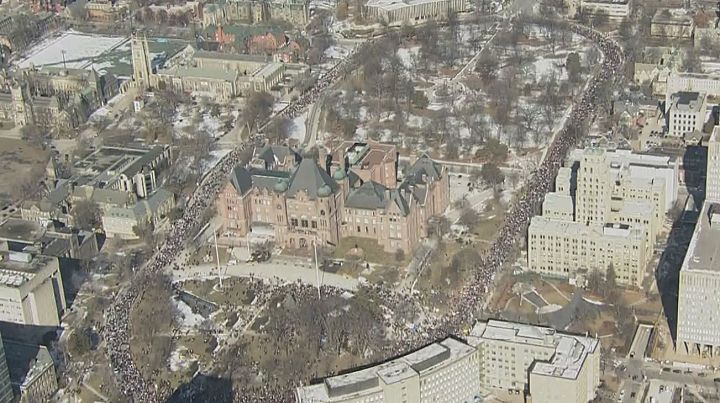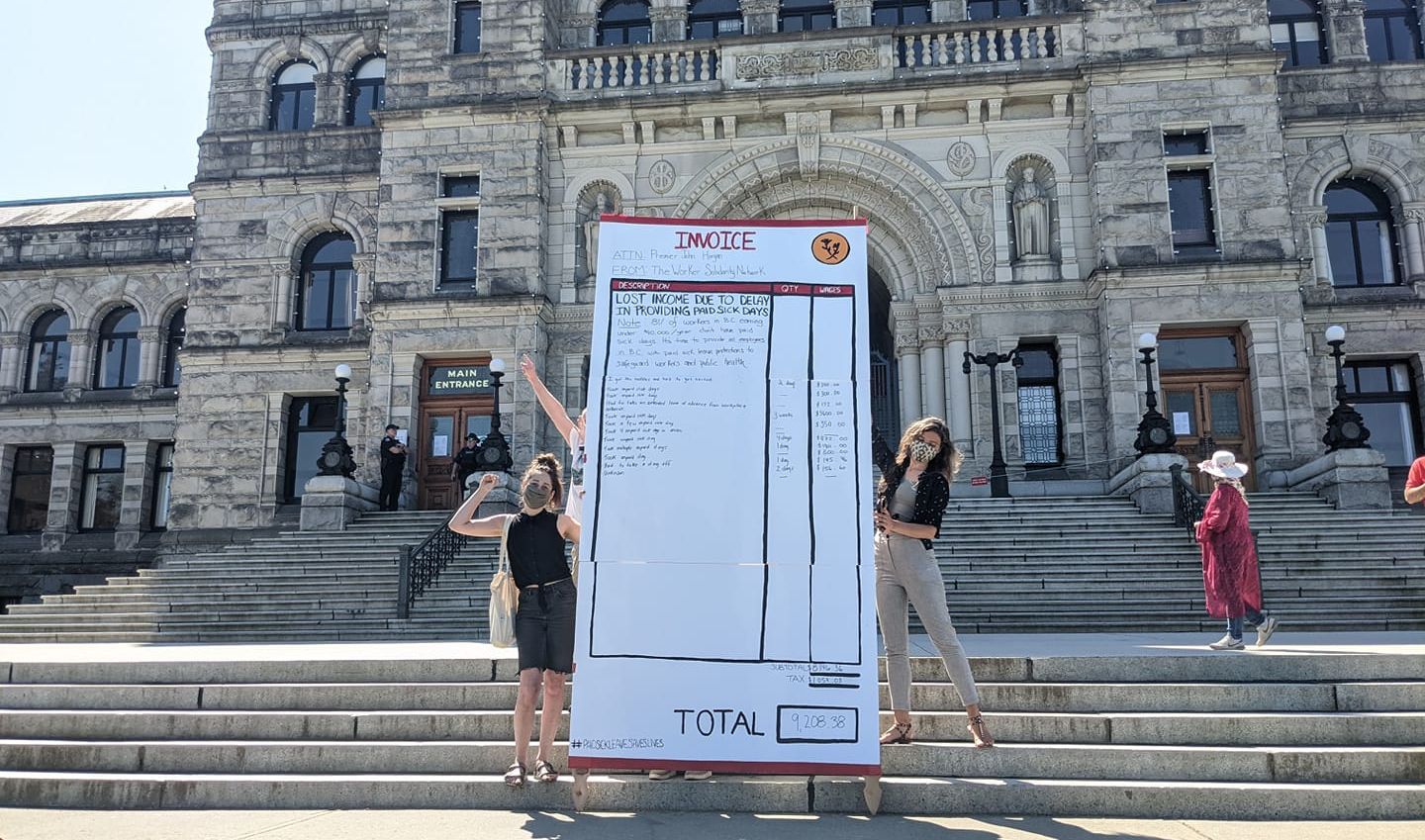Tim Heffernan is a retired Ontario Teacher.
Friday, February 21, saw the biggest show of united action by Ontario teachers since 1997. All 4 unions (elementary, secondary, Catholic and French) representing 160,000 teachers, in a one day strike closed down schools that affected 2 million students. In Toronto, an estimated 30,000 teachers, education workers, parents and students set up a march which effectively encircled the legislative building. In Peel region (Mississauga) roughly 20,000 picketed along a 30 kilometre stretch of road in what many are claiming to be the longest picket line ever (Guiness World Book of records has been notified!)
It was a powerful demonstration of educators’ resolve and union strength. It was a clear refutation of the Minister of Education who has claimed that the union leaders are not representative of ordinary teachers.“This is a demonstration of unity. It’s a demonstration that we’re not divided from our members or from the public in this province,” said OSSTF president Harvey Bischof. Backing this up, a teacher on the 30km picket line told Global News “I think the lack of negotiations is on the government side. I know I have full trust in our unions that they are doing everything. We have given them the mandate to strike and to do everything they need to do to preserve public education in Ontario.”
But the question is posed – if the members have given the leaders the mandate to strike, what is the best way to pursue that mandate? The first rotating one-day strike came in mid December. Ten weeks later, with several more of these same type of strikes completed and despite having solid support from the public, there is no evidence of the government blinking. As Peel OSSTF activist Zain Ghiadally commented, “Back to work legislation is a concern for members but at some point it will require a complete withdrawal of labour for a prolonged period.”




